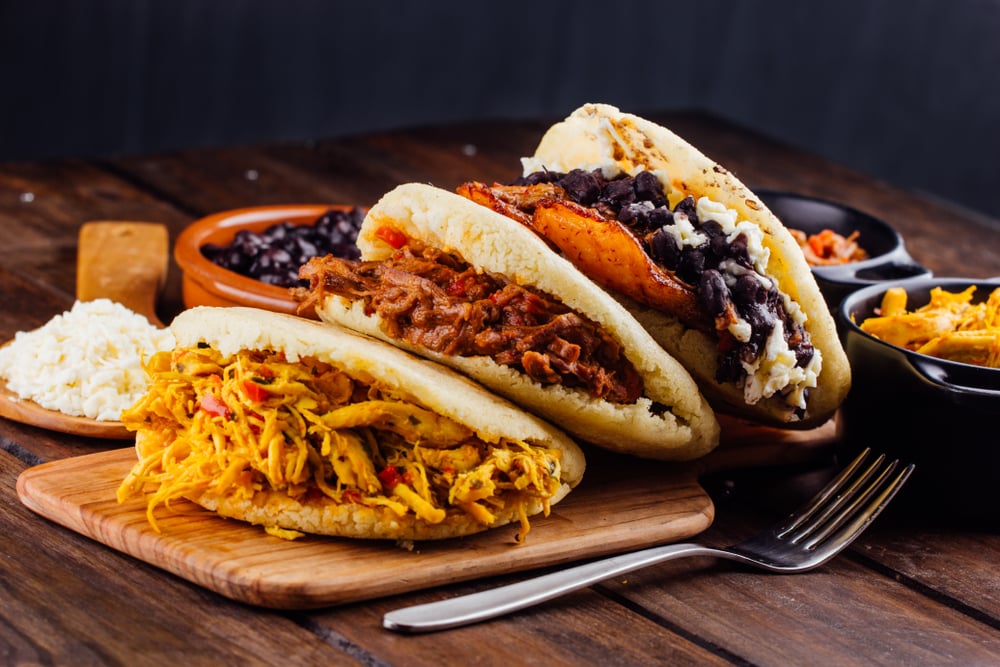
Latin American cuisines have a variety of savory snacks, with which arepas and empanadas have gained immense popularity. It wouldn’t be wrong to say that these dishes are extremely similar in appearance, but the ingredients are different, which changes the texture and flavor. So, let’s check out the arepas vs. empanadas comparison in this article to understand the differences!
Arepas vs Empanadas
Arepas
The arepas are served for dinner, lunch, and/or breakfast all across Colombia, Venezuela, and other South American countries. They have been around since the pre-Columbian era and were widely made in Gran Colombia. These are basically savory patties and are made from three key ingredients. First of all, the patties are made from dough of pre-cooked corn flour, salt, and water. The corn flour, water, and salt are mixed and kneaded to achieve a soft dough texture.
In most cases, the dough is rested for a few minutes to make sure it’s ready to be rolled and cut. The crust is made by making the dough ball, which is then patted and cupped between the palms for a few seconds until you achieve the disc shape. These arepas are placed on the comal or a hot griddle to make sure both sides are golden brown. In addition, they are added to the oven for a few minutes to make sure they expand and achieve a crispy texture.
As far as the stuffing is concerned, you need to slice your knife along an edge to create a pocket. Once the pocket is ready, you can add veggies, meat, beans, and cheese. Reina pepiada is the most common filling for arepas, which is basically a combination of creamy and shredded chicken salad and avocado slices. In addition, arepa pelua is another variety of arepas, which is filled with shredded beef. Another variety is arepa domino, which has cheese and beans filling, while arepa perico has tomato and egg filling.
In most cases, ground maize dough is used to make arepa and has ham spread on the insides. For the most part, it is a round, flat, and unleavened patty. The arepas are usually fried with white cheese grated on the top (feta cheese is the most common choice). In addition, there are sweet arepas available that are filled with anise and sugarloaf. For the most part, maize was ground to make arepa flour, which is then used to make dough.
Empanadas
The empanadas are another Latin American snack that is not only versatile but filling and crispy as well. Every country has its own variation and is known as panzerotti, samosas, pastelillo, pastelitos, and meat pies. For the most part, the origin isn’t known, but the earliest record goes back to 1600 BC. These snacks came to Latin American countries from Spain during the colonization and exploration periods, but the empanadas are consumed all around the world.
They are filled with filling of your own choice, ranging from cheese to chicken and seafood to meat. The popular recipe includes the use of beef, papitas, ham, and cheese. In addition, peppers, olives, and raisins are also used. For the most part, empanadas are served with aji, which is a Colombian salsa that’s made from cilantro, salt, lime, pepper, and tomato. The preparation process is pretty similar to arepas, as the dough is mixed up with water to achieve a softer consistency.
Empanada’s dough is rested for an hour, after which it’s flattened with a baking pin or a roller. The circular cutouts are used to add the filling. In particular, the filling is placed on one side of the circle, and the empty part is folded over the filling area. The edges of the dough are sealed with the help of a beaten egg, and the fork is also used to press the excess dough.
The empanadas are served as a side, snack, or main meal. In fact, many people fill them with fruits and jams to make desserts (guava or apples are commonly used). The empanadas’ dough can be made from corn flour as well as wheat flour, depending on the preferences. The empanadas can be baked or fried to achieve a golden brown appearance. The beef-based empanadas are the most popular, but the meat can be swapped for other types of meat, such as mutton, seafood, and chicken.